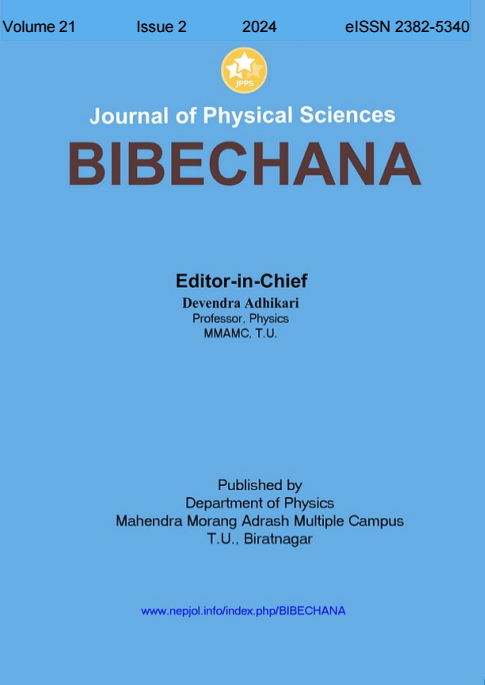Phytochemical Analysis and Biological Activities of Solvent Extracts of Two Traditionally Used Medicinal Plants
DOI:
https://doi.org/10.3126/bibechana.v21i2.61208Keywords:
Buddleja paniculata, antimicrobial , Antioxidant, phytochemical, toxicity, Buddleja asiaticaAbstract
The plants Buddleja asiatica and Buddleja paniculata are two closely related species of which the former has widespread uses in traditional medicine while the latter remains relatively unexplored. The present study focused on the analysis of phytoconstituents and the estimation of different biological activities of extracts and semi-purified fractions. The ethyl acetate stem fraction and methanolic extract of the leaf of B. asiatica displayed the highest phenolic contents of 390.98 ± 5.32 and 383.72 ± 7.31 mg GAE/g. TFC content was measured as 207.33 ± 0.34 and 138.58 ± 0.53 mg QE/g for ethyl acetate leaf and stem fraction of B. asiatica. The highest antioxidant activity was displayed by crude stem extract of B. paniculata with IC50 35.65±0.61 µg/mL in DPPH assay followed by ethyl acetate stem fraction of B. asiatica with IC50 36.17±0.92 µg/mL. The DCM leaf fraction and stem fraction of B. asiatica were found active against gram-negative and gram-positive bacteria. Both plants displayed mild to no toxicity against the brine shrimp nauplii. Median lethal concentration (LC50) ranged from 346.96 ± 25.39 in hexane fraction of leaf to 2719.32 ± 706.5 µg/mL in crude methanol extract of B. paniculata. The present study showed these medicinal plants are rich in an important class of organic compounds that play a significant role in the cure of bacterial infection which ultimately supports pharmaceutical research.
Downloads
Downloads
Published
How to Cite
Issue
Section
License
Copyright (c) 2024 The Author(s)

This work is licensed under a Creative Commons Attribution-NonCommercial 4.0 International License.
This license enables reusers to distribute, remix, adapt, and build upon the material in any medium or format for noncommercial purposes only, and only so long as attribution is given to the creator.




